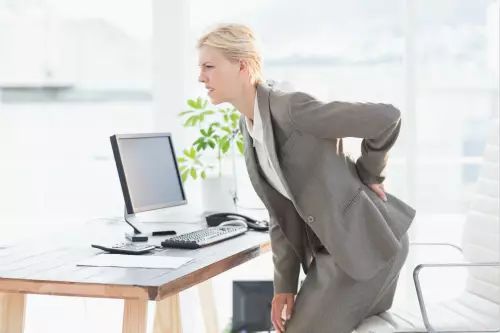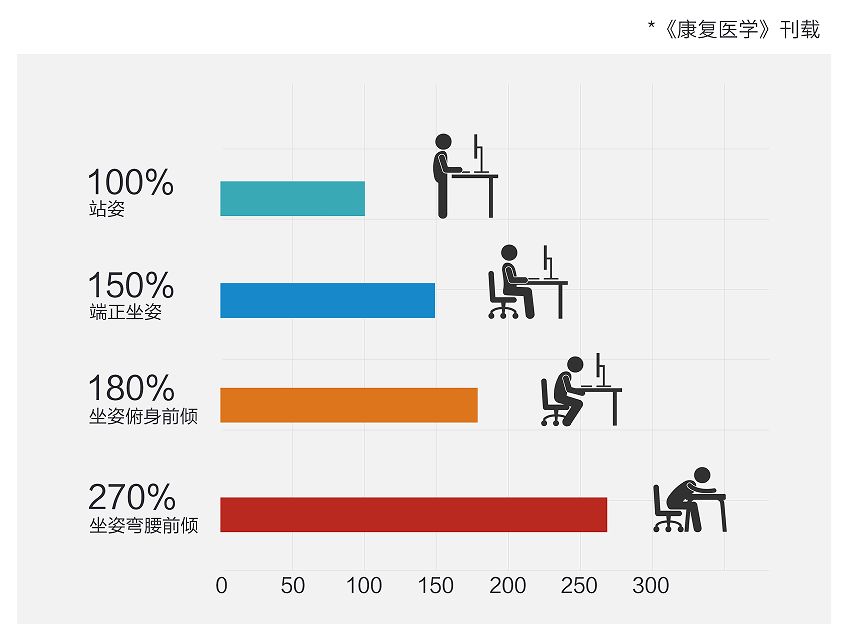Categories
- Our Blog (6)
Like all living things in the world, human body structures are designed to adapt to changing living conditions.
For example, humans have evolved from the initial crawling to the upright walking, and the bones have changed significantly during the long evolutionary process in order to adapt to this change. Our feet have become more spacious and have arches. The spine is changed from a straight line or an arc of a reptile to an S-shape, all in order to accommodate the evolutionary adjustments made by the upright walk.
The S-shaped spine, like a spring, can better withstand the pressure and shock caused by walking and jumping, so that the spine can be protected from damage.
But sometimes, the evolution of human bones may also lag behind changes in the working environment.
For example, in the moment, many people take the car instead of walking, and replace the manual labor with long-term mental labor. The time for humans to “sit” is getting longer and longer, but the speed of evolution of our body obviously lags behind the fast-changing lifestyle. Therefore, when the body structure is not in harmony with the lifestyle, the orthopedic diseases caused by sedentary are increasing.
Let’s take a look at what is the most common orthopedic disease that can be caused by sitting in the office for a long time.
Cervical spondylosis
Cervical vertebrae, it is to wear a brain bag of more than 20 kilograms per day, the lower end is connected with the thoracic vertebrae with relatively less activity, and it is also very hard to complete the activities of bowing and turning heads.
In addition to hard work, the length of the cervical vertebrae is relatively thin. The vertebral body of the cervical vertebra is smaller than that of the thoracic vertebrae and lumbar vertebrae. The muscles of the vertebrae and the thoracic vertebrae and the lumbar vertebrae are relatively weak. In addition, the cervical spine is also “small relatives”, unlike the thoracic and lumbar spine, it can be protected and supported by ribs or pelvis, it can only support everything very independently.
This series of factors causes the cervical vertebrae to be very vulnerable to external forces, and the muscles are also very prone to strain or strain. For example, our cervical vertebra is like a duck neck. In addition to the bones seen on the X-ray film, there are many difficult and intricate muscles and ligaments.
These muscles, like rubber bands, firmly maintain the physiological curvature of our cervical spine.
However, because of the changes in the way we work, play, and travel, we are sitting and bowing longer and longer, causing the muscles on the back side of the cervical spine to be stretched for a long time, while the muscles on the anterior side of the cervical spine are contracted for a long time. status.
Over time, the muscles on the posterior side of the cervical spine exceed the limits of elongation, and the damage or elasticity is reduced. The strength of the muscles behind the neck is reduced. In the absence of muscle tension on the posterior side of the cervical vertebrae, various kinds of strains will gradually appear. The problem of displacement, which leads to cervical spondylosis.

Lumbar muscle strain
The lumbar spine bears the weight of the upper part of the body and is the support point for the upper body movement. It is the most difficult part of the human body to relax, and it is also the part of the human body that is most prone to muscle strain.
People who often sit and work can easily cause adhesions, degeneration and contracture of soft tissues such as fascia and muscles, resulting in lumbar muscle strain.
Many people are confused and feel that “I haven’t worked hard, why do I have lumbar muscle strain?”
In fact, it is precisely because of the long-term static work of the waist that the muscles continue to contract for a long time, the blood vessels in the muscles are squeezed, hindering the normal flow of blood, thereby causing muscle ischemia, lack of oxygen, and metabolites cannot be discharged in time. This can cause reflex contractions of muscle pain, make muscles stiff, and even cause muscle spasms, and often cause muscle fiber degeneration.
Other lumbar spondylosis
As we have already mentioned above, sedentary can cause muscle strain in the lumbar spine, but this is not the result of sedentary lead to lumbar spondylosis.
In fact, the spine is an organic whole consisting of bones, joints, nerves, muscles, fascia, and ligaments. Ignoring the role of either side, the understanding of the spine is not comprehensive, and any problem arises. Other structures have an impact.
For example, lumbar muscle strain, I often think of the many muscles attached to the lumbar spine as two iron cables tied to the pole. These two iron cables maintain the stability of the telephone pole, but this stability has a premise, that is, both sides The iron wire balances the tension of the electric pole. Imagine if the muscle on one side of the lumbar vertebrae is strained, resulting in a small pulling force on one side and a relatively large pulling force on one side, which will inevitably cause instability of the entire spine.
This instability can cause a series of lumbar diseases such as disc herniation, vertebral slippage, bone hyperplasia, and ossification of the posterior longitudinal ligament.

Knee arthritis
There are a series of intricate muscles around the knee joint to maintain the stability of the joint. When the muscles around the knee joint are strong enough and the elasticity is large enough, the joint can be “decompressed” to a large extent, so that the joint surface is not too stressed. For sedentary people, the amount of exercise is reduced, and the muscles around the joints gradually become slack, resulting in instability of the knee joint, symptoms such as cartilage wear and joint pain.
VIGOR suggestion: sit for a long time, stand for a while
Stand up, the lumbar spine is less stressed.
 Sitting for a long time, standing tired, often changing posture, the spine is healthier.
Sitting for a long time, standing tired, often changing posture, the spine is healthier.